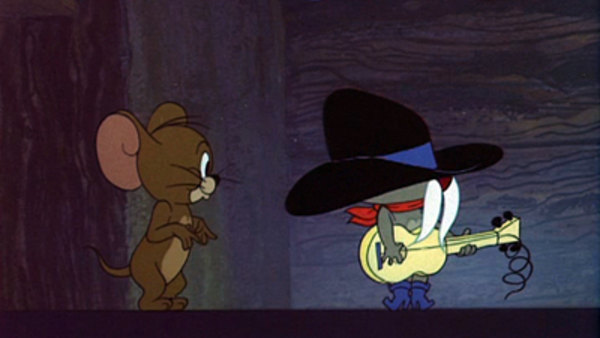

Hanna and Barbera made minor adjustments to Tom and Jerry's appearance so they would "age gracefully".
TOM AND JERRY EPISODES 50 SERIES
The series developed a quicker, more energetic and violent tone which was inspired by the work of MGM colleague Tex Avery. The composer of the series, Scott Bradley, made it difficult for the musicians to perform his score which often involved the twelve-tone technique developed by Arnold Schoenberg.

Early into the series, Jerry never started the conflict, and shorts typically involved Tom losing by the end. The pair would continue to work on the series for the next fifteen years of their career. Puss Gets the Boot was a critical success, earning an Academy Award nomination for Best Short Subject: Cartoons in 1941 despite the credits listing Ising and omitting Hanna and Barbera.Īfter MGM gave the green-light for Hanna and Barbera to continue, the studio entered production on the second Tom and Jerry cartoon, The Midnight Snack (1941). Carr was awarded a first place prize of $50. A studio contest held to rename both characters was won by animator John Carr, who suggested Tom would be the name for the cat and Jerry would be his name for the mouse after the Christmastime drink. Matters changed, however, when Texas businesswoman Bessa Short sent a letter to MGM asking whether more cat and mouse shorts would be produced, which helped convince management to commission a series. So MGM focused on other cartoons including Gallopin' Gals (1940) and Officer Pooch (1941). It was released onto the theater circuit on Februand the pair were advised by management not to produce anymore cartoons about the cat and the mouse. The short, Puss Gets the Boot, featured a cat then named Jasper and an unnamed mouse (named Jinx in pre-production) and an African-American housemaid named Mammy Two Shoes. The pair discussed their ideas with MGM cartoon studio head Fred Quimby, who gave them the green-light to produce one cartoon short despite a lack of interest in it. An early thought involved a fox and a dog before they settled on a cat and mouse.

Barbera then teamed with fellow Ising unit animator and director William Hanna and pitched new ideas, among them was the concept of two "equal characters who were always in conflict with each other". Mayer wished to boost the animation department by encouraging the artists to develop some new cartoon characters, following the lack of success with its earlier cartoon series based on the Captain and the Kids comic strip. In June 1937, animator and story man Joseph Barbera began to work for the Ising animation unit at MGM, the largest studio in Hollywood at the time. The two would eventually be rehired, however. The Happy Harmonies regularly ran over budget, and MGM dismissed Harman-Ising in 1937 to start its own animation studio. These were known as Happy Harmonies, and in many ways resembled the Looney Tunes' sister series, Merrie Melodies. Harman and Ising came to MGM after breaking ties with Leon Schlesinger and Warner Bros., and brought with them their popular Looney Tunes character, Bosko. In 1934, MGM contracted with animation producers/directors Hugh Harman and Rudolf Ising to produce a new series of color cartoons. 2 Early development and Puss Gets the Bootīefore Tom and Jerry MGM branches into cartoons.1 Before Tom and Jerry MGM branches into cartoons.


 0 kommentar(er)
0 kommentar(er)
